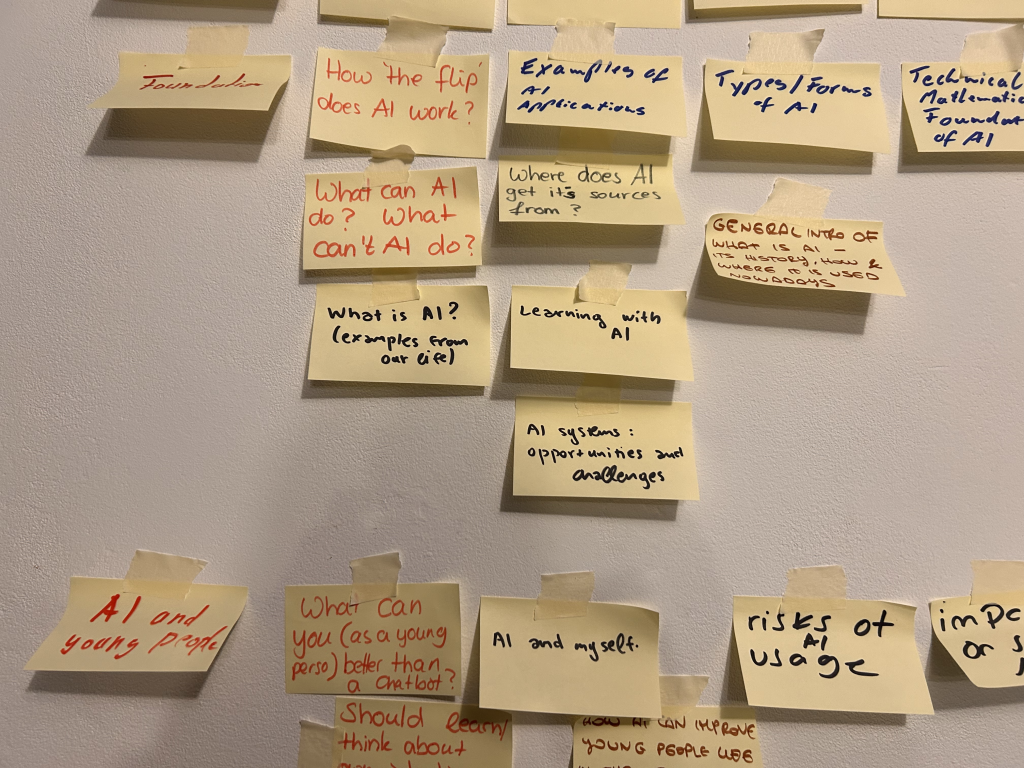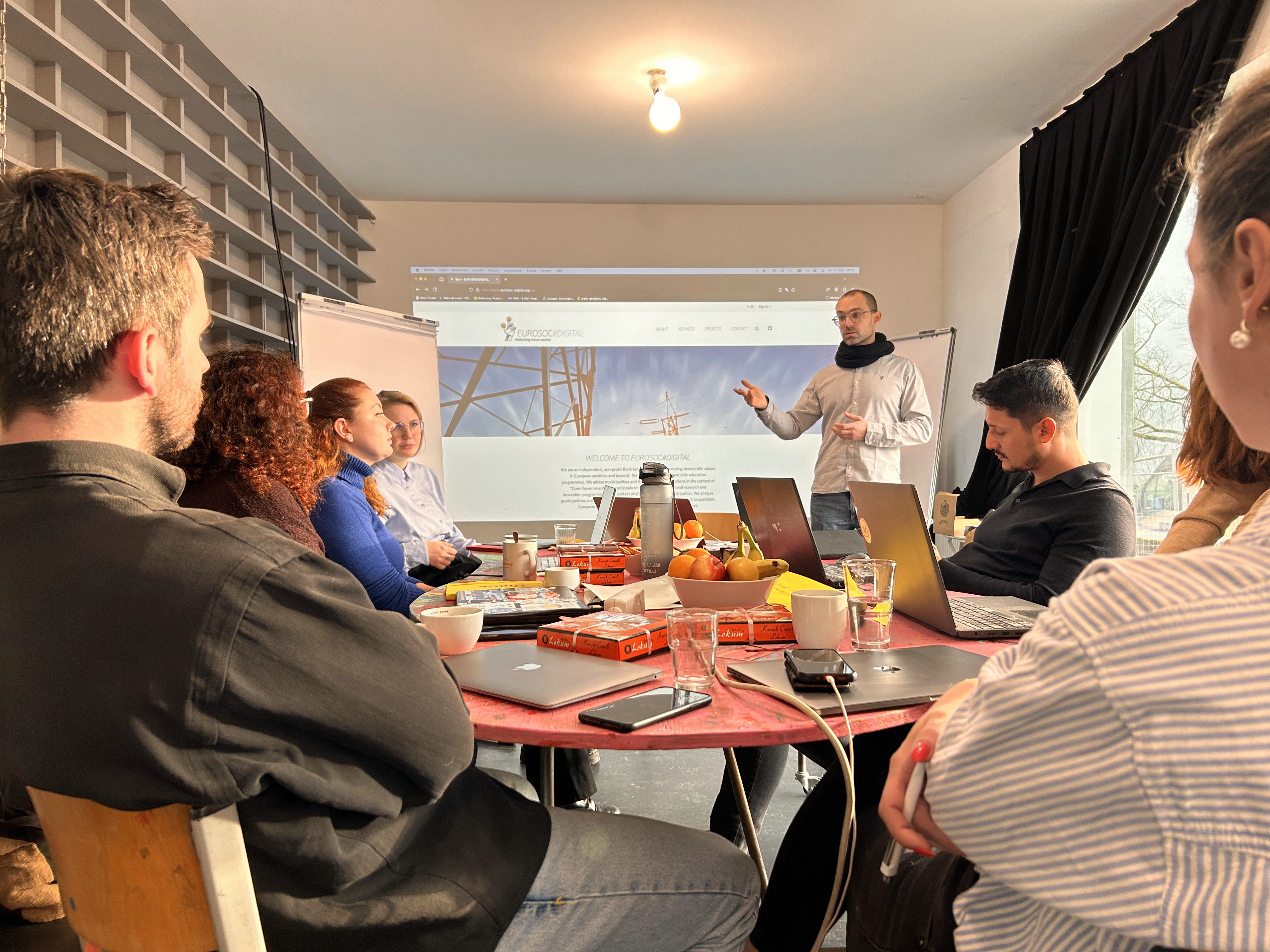At YouthGovAI’s Transnational Project Meeting in Berlin, we came together to ask a simple but vital question: What does it take to prepare young people for an AI-driven future—and make sure they have a say in it?
Why we met
On November 21–22, 2024, YouthGovAI partners from across Europe gathered in Berlin for a hands-on, minds-on meeting. Our goal? To clarify our shared vision, align our strategy, and co-create tools that help young people not just understand AI—but actively shape its governance.
This wasn’t just about tech. It was about trust, learning, empowerment, and future citizenship.
What we talked about—and why it matters
1. AI in 2030: Expectations vs. Reality
We started by imagining the world in 2030. What role will AI play? Most of us agreed: AI will be powerful, but not all-powerful. It will likely support decision-making—not replace it. And while it may transform certain sectors, its impact won’t be equally felt by everyone.
Importantly, we emphasized the need for explainable, ethical AI, and democratic oversight. We don’t just want smart systems—we want just systems.
“AI will be integrated into our lives, but humans should remain the ones making the final call.”
2. What we’re not talking about enough
We realized that some of the biggest questions about AI often go unasked:
- How is AI affecting young people’s brains, creativity, and soft skills?
- Are educational systems adapting—or falling behind?
- Are we asking the big “why” questions, not just “how”?
There was a shared concern that AI might accelerate tasks, but also increase pressure—with little time to adapt. For young people especially, this could lead to stress, confusion, and a sense of losing control over their own learning paths.
3. Opportunities for young people
Despite the risks, the potential is huge. AI can:
- Personalize learning and boost independence
- Break language barriers
- Support inclusion, especially for young people with disabilities
- Be a “sparring partner” for creative thinking
But these benefits depend on how we use it—and who is included in its development.
4. Risks that can’t be ignored
We also discussed the risks AI poses to identity, culture, and critical thinking. Could global AI systems push young people toward uniformity, erasing local culture and personal expression? Could reliance on AI lead to a loss of merit, originality, or even human rights protections?
The conversation was clear: AI must not just serve efficiency—it must respect diversity, rights, and individuality.
5. What young people need to know
So, what should we be teaching? Here’s what we agreed on:
- Foundations: What AI is, how it works, who builds it, and why it matters
- Ethics: From bias and fairness to data rights and social impact
- Society: How AI affects democracy, decision-making, and digital citizenship
- Governance: Why regulation matters—and how young people can be part of the conversation
“We want young people not just to understand AI, but to shape how it’s governed.”

Building the tools: What comes next
The team outlined plans for a learning platform using Moodle, with personalized, inclusive courses that combine videos, exercises, and real-life experiments. We also emphasized blending online and face-to-face learning to keep it grounded and social.
We agreed to keep the platform live for after the project ends, so its impact continues. And we’re developing campaigns and co-creation sessions to make sure the learning reflects real voices—especially those of youth.
A White Paper, Policy Briefs, and the Power of Youth Voice
One of our major outcomes will be a White Paper that collects national findings, survey data, focus group insights, and policy recommendations. It will show why a European approach to AI education and governance matters, and how to include young people meaningfully.
We’ll also publish policy briefs to make our ideas accessible to educators, policymakers, and civil society—because the future of AI can’t be written without the next generation.
Final Thoughts
The Berlin meeting was more than planning. It was a reminder of why this project exists: Young people are not just users of AI. They’re future leaders, creators, and regulators of it.
But to truly take part, they need the right tools—and a space at the table.
YouthGovAI’s mission? To empower young people in the field of AI, so that they become agents in the AI governance process.
We’re building that future—together.
